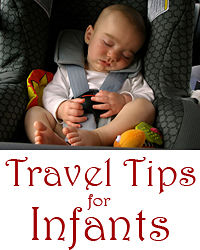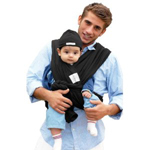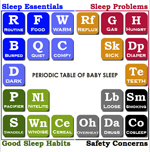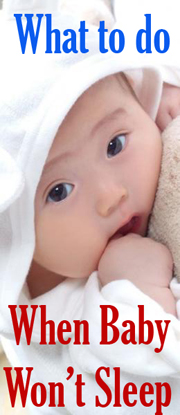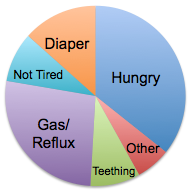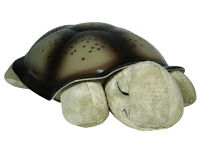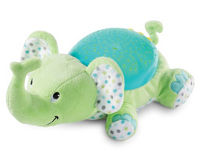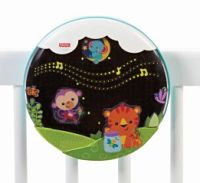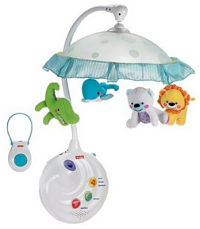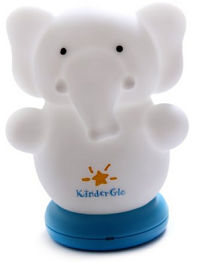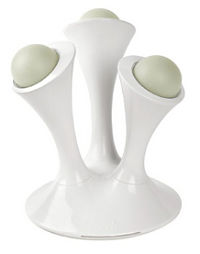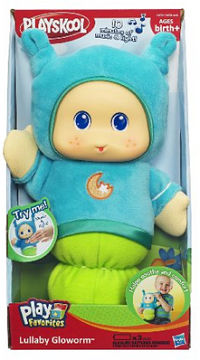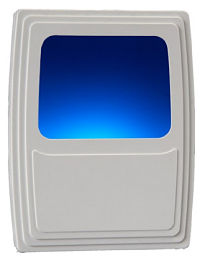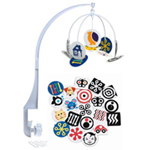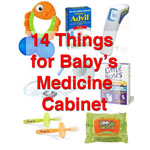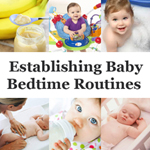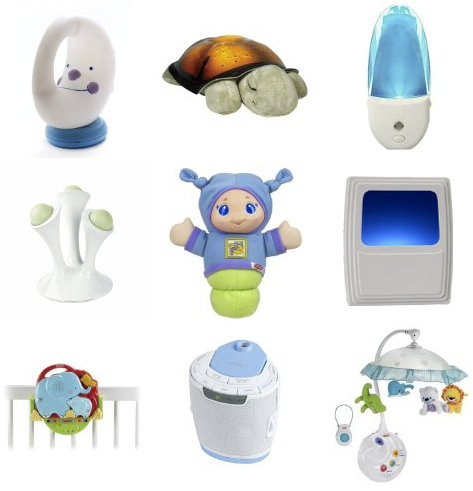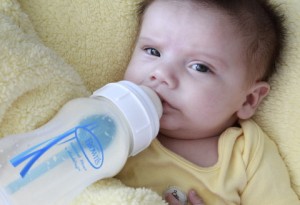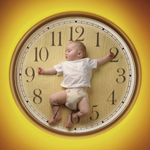After the first few months (or weeks) of having your newborn baby at home, you might be getting a little stir crazy. Or your family or friends who live a few hours away begin clamoring loud enough that they’d like to see you, and you feel brave enough to take a family trip. Traveling with infants can be a major challenge. With a few tricks up your sleeve, you can make the ride a little bit easier. Our guide is broken down into three sections:
Day-to-Day Essentials
Taking Baby Out In Public
Infant Sleep While Traveling
Day-to-Day Essentials for Infant Care
First off, the easy stuff. You’ll need enough of those daily things that your baby needs, including but not limited to:
- Formula and/or baby food. It’s best to over-estimate how much you need, because these can be expensive when you buy them out of town. You should have enough clean bottles and nipples within reach, as well as bottles of clean water for mixing. One item that can be a life-saver when traveling with infants is pre-mixed, ready-to-feed liquid formula. These seem to taste a bit different from the powder, so make sure your baby likes it before you leave town.
- Diapers and wipes. Calculate how many you need per day per baby, and then add 20% just to be safe. The importance of diapers is often underestimated! There can be unforeseen blowouts or bouts of digestive issues. Plus, traveling is much easier when you’re not trying to stretch diapers.
- Baby clothes. Pack plenty of these, and go for comfort over cuteness. Think about what your newborn should sleep in. Footed pajamas or onesies are easier to keep track of than socks. Same thing with single-piece garments over two-piece outfits.
- Car seat. You have this already, because it’s the law. If you’re flying, be certain ahead of time that there will be a car seat waiting for the ride from the airport to wherever you’re going. If it’s a shuttle and they don’t offer one, bring your own.
- Stroller. Unless you plan to lug your baby around in his or her car seat the whole time, bring along an umbrella stroller or travel system. See our Pram & Stroller Reviews for some of the best options.
- Toiletries. Don’t forget the little things like Q-tips, diaper rash cream, and baby toothbrushes. For a full list, see our article on 14 things for baby’s medicine cabinet.
Adjusting Your Baby’s Car Seat
The more comfortable your baby is, the more relaxed he’ll be. That’s the key to traveling with babies. It starts in the car with a properly adjusted car seat.
  |
|
Taking Baby Out in Public
When you’re traveling, you’ll most likely spend more time taking your infant in public – stores, restaurants, that sort of thing. One thing that you will immediately notice is that babies have a strange effect on people. Complete strangers will approach and greet your baby, often making silly faces or noises to try to get a smile. This stuff is fine. What you need to watch out for is this: people will come up and touch your baby without asking you. They often don’t even realize it – there’s some base instinct acting here. My grandmother was notorious for this.
Being a germophobe, I don’t like strangers touching my baby, especially his hands which are likely to return any moment to his mouth. Here are the strategies I use to prevent it:
- Block access to the baby. If your car seat or stroller has a canopy, use it. Keep your baby close to you at all times, so that you can use your body as another barrier. See our review of newborn baby carriers to learn about some great options for keeping baby close but your hands free.
- Be ready to speak and act. If I see someone reaching for my baby, I ask them to stop. If necessary, I will physically block their outstretched, likely-unwashed fingers. I do try to be nice while doing this; one phrase that seems to help is when I say “Oh, sorry, he’s just getting over a cold.”
- Keep hand sanitizer with you at all times. Use it liberally on your baby’s hands in the event that someone touches them. You should also use it yourself after touching door handles, cart handles, cash, public-use writing utensils, that sort of thing.
Baby High Chair / Shopping Cart Covers
One of the best baby items that we ever bought was a highchair/shopping cart cover. These serve several purposes. First, they’re soft and padded to protect your baby from the hard surface of the chair or cart. Second, they help catch anything that your baby might drop, such as a pacifier. Third, they act as a germ barrier between your baby and whatever the previous babies in that chair have had. People are always coming up and asking where we got ours.
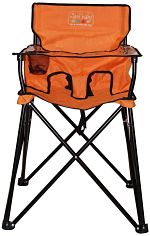 Portable High Chairs
Portable High Chairs
Another very useful item to pack along for baby road trips is a portable high chair. This is something I always seem to forget when we’re going places with the kids, and them I’m always kicking myself for it. Portable high chairs like the Ciao Baby travel high chair have so many uses for when you’re out and about with a baby:
- A clean place to plop the baby when visiting friends
- At a picnic or outdoor party, somewhere safe and bug-free for baby to sit.
- An excuse not to borrow the dirty or rickety old high chair from someone’s garage
- A slight reduction in the mess your little messy eater will leave behind
Helping Your Infant Sleep While Traveling
Traveling with your infant is easiest when he’s sleeping. Unfortunately, babies have trouble sleeping in strange environments, and you can’t take the entire baby room with you. Still, with a little bit of planning, you can bring along a few essentials to help establish a comfortable, portable sleeping setup for your infant. Alternatively, if you’re traveling to the lake cabin or grandparents’ house, what better place to install a mini crib or bassinet? That way your little one always has a place to sleep and call their own.
- Pacifier clip. At home, if the pacifier falls on the floor it’s no big deal. A quick rinse and wipe, and you pop it right back into the baby’s mouth. When traveling, it’s another story. If it falls in the car you can’t find it; if it falls on the floor of a restaurant or store or hotel room, there’s no way you’re putting it right back in. Enter one of the best inventions ever for baby care: the pacifier clip. It fits most pacifiers and attaches snugly to your baby’s outfit or sleep sack. There’s always a pacifier handy when this thing is attached. Don’t leave home without one.
- Travel crib or pack-N-play. Your baby needs a soft, protected place to sleep while you’re traveling. Traditionally, you lugged along a pack-N-play (also called a play yard) for your baby to sleep in. High-end models come with built-in bassinets, changers, and compartments, but those don’t travel as well as the basic pen does. But there are some other options out there: compact folding bassinets and cribs designed to be travel friendly. See our review of portable travel cribs for some of the best options there.
- Portable swing. We have a Fisher-Price portable swing like this one, we love it. It folds up flat enough to stick behind the front seat of the mini-van. It runs on batteries, is quiet, and very soft. Babies love this thing. An added bonus is that this swing is small enough to keep in the corner of a room, and keeps your baby off of the floor. For a breakdown of the features, see our comparison of baby swings.
- A portable night light like this one, which is rechargeable and comes in a variety of animal shapes, is a comfort you can take along with you. The trick is to use the same light at home, so that your baby is accustomed to it. See our guide to night lights for babies for details.
- Sound machine. You won’t be able to control much of the noise in a car, on an airplane, or even in your hotel room. To soothe your baby and provide some white noise, look into a baby soother or sound machine. They even make portable versions of these.
